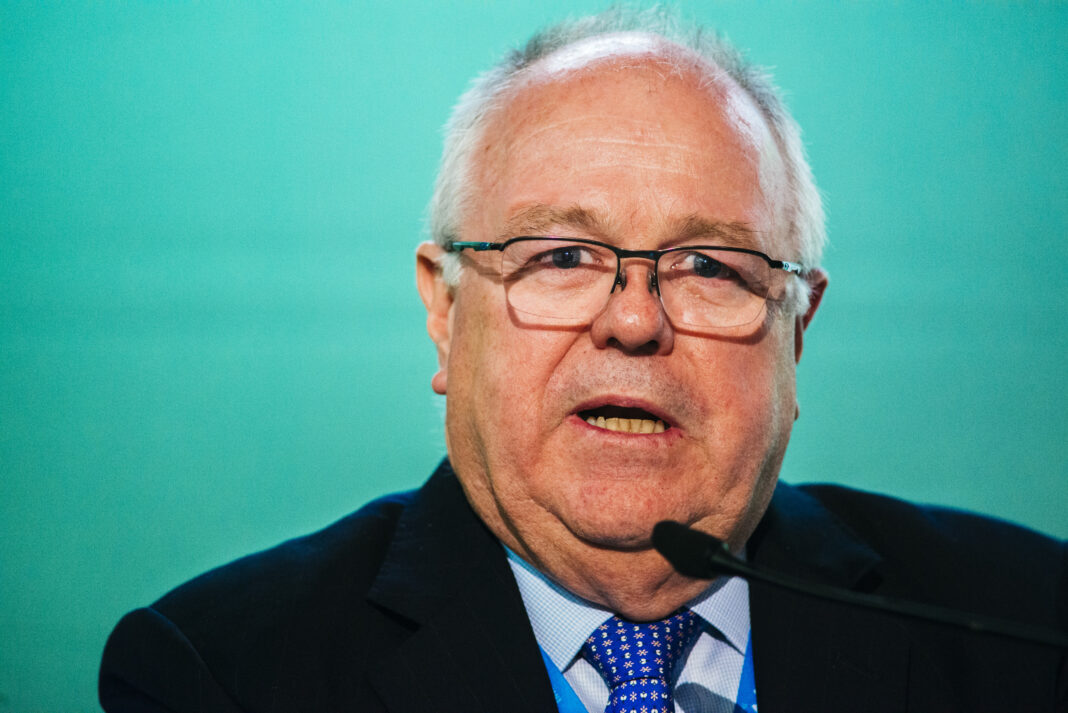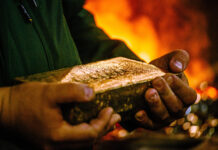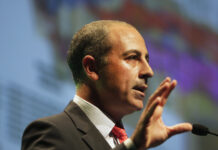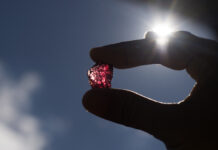It hasn’t always been smooth sailing, but Perseus Mining now finds itself in the strongest position it’s ever been in – and the company is determined to prove sceptics wrong about its longevity.
In mid-June, Perseus did something it had never done before and released a five-year production outlook. Speaking to analysts the day the outlook was released, Perseus MD Jeff Quartermaine said it was hoped the plan would allay the misconception that the company’s operations would have a short life.
“People believe the music is about to stop … it is grossly premature to be predicting Perseus’s imminent demise,” he said.
Perseus expects to produce 515,000-535,000 ounces of gold per year to the end of June 2030 at average all-in sustaining costs of $1,400-$1,500 an ounce. The company has three operating mines: Edikan in Ghana, and Sissingué and Yaouré in Côte d’Ivoire. Earlier this year, it pushed the button on development of the Nyanzaga mine in Tanzania.
Production in the next couple of years will dip due to the deferral of the Meyas Sand project in Sudan, because of the civil war, and as the $523m Nyanzaga project is built. Nyanzaga, which represents the first major gold mine development in Tanzania in 17 years, will push Perseus’s production profile to as high as 630,000oz of gold in the 2029 financial year.
“Basically, what we’re wanting to do is to demonstrate to the market that our production profile doesn’t end in the next couple of years, as a bunch of people think it will, but it will be extending well beyond the end of this decade,” Quartermaine told Miningmx in an interview.
“We’ve been able to extend the life quite materially actually, which adds to the overall narrative of the company, which is to be a 500,000oz-600,000oz gold producer at a margin of absolutely no less than $500 per ounce on every ounce that we produce.”
While record gold prices have helped, Perseus has been able to establish a track record of delivery, boosting shareholder returns in the process. The company has been rewarded by the Australian market. A surge in the share price to record levels resulted in Perseus joining the ranks of the exclusive S&P/ASX 100 in June.
CASH IS KING
Quartermaine said the “be-all and end-all” for the company was cash flow. Perseus generated $452m of cash flow in the nine months to March 31. “The cash flow is super important, because our aim is to generate benefits for all stakeholders in fair and equal proportions.
“If you look at the stakeholder groups – governments, communities, employees, suppliers of goods and services, shareholders and financiers – apart from the last group, they all derive benefit from cash payments – you can’t pay taxes on promises or employees on promises.
“You’ve got to hit the table with cash, so it’s super important for us, particularly in that African setting where social licence to operate is so important, that we have access to cash at all times and under all operating circumstances.”
Perseus had $801m cash at the end of March. The company pays a dividend every six months and it recently launched a A$100m share buy-back for the first time. “It’s certainly the first time I’ve been involved in [a buy-back], and I was always a bit sceptical about the benefit of it, but it’s been really very valuable for us,” Quartermaine said.
“What we’ve been able to do is to use it as a sort of defence mechanism to take the volatility out of our share price … so we’ve found that the buy-back has been extremely useful from that perspective, but also too in terms of reducing the number of shares on issue, so the core metrics of earnings per share, cash flow per share are enhanced as well, because you’ve got fewer shares out.”
Basically, what we’re wanting to do is to demonstrate to the market that our production profile doesn’t end in the next couple of years
Jeff Quartermaine
While Perseus is self-funding Nyanzaga and the Yaouré underground expansion, its growing war chest inevitably leads to speculation about inorganic growth.
Perseus is no stranger to acquisitions, with its most recent being the A$276m takeover of Nyanzaga’s former owner OreCorp last year. Perseus is also the largest shareholder in Guinean developer Predictive Discovery, holding 17.9%.
Quartermaine said the company had engaged with Predictive Discovery but not completed any formal due diligence. With a market capitalisation hovering at around A$1bn, Quartermaine said Predictive Discovery was too expensive, though Perseus would continue to watch and would be prepared to monetise its stake if another offer came along.
“As a general statement on M&A at the moment, we think that prices are pretty darn high,” he said. “People say, ‘You can use your shares.’ They’re also elevated, but that ignores the fact that shares are actually money, and so, overpaying for assets, it’s never been a smart thing.”
Quartermaine said Perseus would be ready to act on opportunistic deals. “We’ll keep a watching brief on the world, because you get these sliding window moments where circumstances may mean that a company is in a position where it can be acquired, whereas six months before or after that wasn’t the case,” he said.
“That was certainly what happened with Amara Mining, when we got the Yaouré project. Amara found themselves in a difficult position, because the AIM market in the UK imploded and they needed funding, and we were there, and that was one of the best things that we ever did. So there are those moments when the circumstances work in our favour, and we need to be capable of acting, and that involves having sufficient money available to you to be able to transact properly, because money does talk in those circumstances.”
LONG-TERM GROWTH
Quartermaine said Perseus was keen to use some of its excess cash on exploration, which is a relatively new initiative for the company. “We’ve never really properly fully funded a long-term greenfields exploration programme,” he said.
“What we’ve done in that area has always been a bit piecemeal-ish, in a way, so what we’ve decided to do, going from next financial year on, is make a long-term commitment to greenfields exploration and to really go out and see if we can’t find mineralisation that we can then develop in-house, because if we are successful, that’s going to be the cheapest ounces we’ll ever get, if we can find them ourselves.”
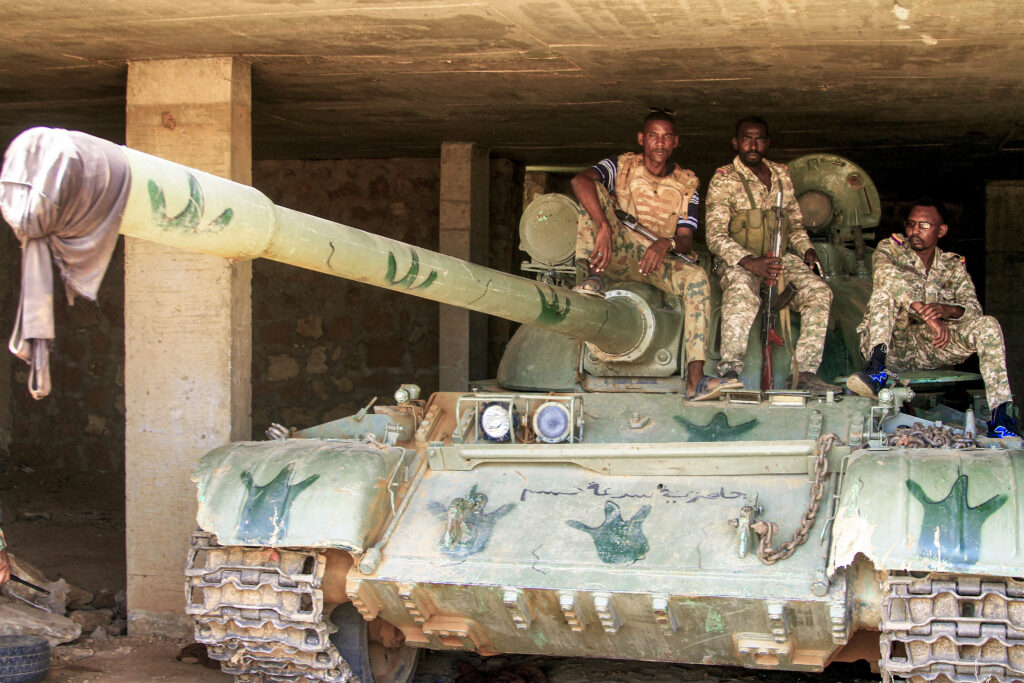
Quartermaine said the company would peg its own ground but was also open to working with smaller companies through farm-in agreements and joint ventures.
“I’m not a big fan of taking 10% equity stakes in companies. I’d rather be putting money into the ground than into a corporate,” he added.
Perseus has also continued drilling at Meyas Sand, with the area around the project remaining conflict-free. “We were quite well-advanced actually, when the war broke out in terms of getting through a FEED (front-end engineering and design) study and things like that, but we haven’t done a lot of that.”
The company continued to have people on the ground in Sudan but it was difficult to predict what was going to happen. “It’s very hard to be confident that the country is going to be investable in the short term, so we’re looking at all sorts of things there to see what works best for us,” he said.
Australian miners operating in Africa continue to trade at lower multiples than their peers operating in Australia or North America. “Some of it ties back to Africa, of course,” Quartermaine said, but added the company’s longer-term production outlook should help close the gap.
The company’s decision to diversify out of West Africa and into Tanzania was a deliberate one.
“Tanzania is an interesting country in the sense that it does have a pretty rich history of mining, but it has gone through some difficult times in the past decade,” Quartermaine said.
“But our sense is that the country has come out of that period very strongly, and they’re very welcoming to foreign investors. We’ve had an absolutely first-class experience in the past 12 months in terms of being able to work with the government and reach an agreement on a way forward, so that was pretty important to us.”
Even so, Quartermaine acknowledged that there would still be investors who put all of Africa into one basket. “But I think most people recognise the jurisdictionsthat we’re in are currently quite different,” he said.
“Ghana and Côte d’Ivoire are definitely not Mali and Burkina Faso.
“Some people are just totally averse to Africa, whereas others who take the time to think about it a bit can see that it’s not one size fits all.”

